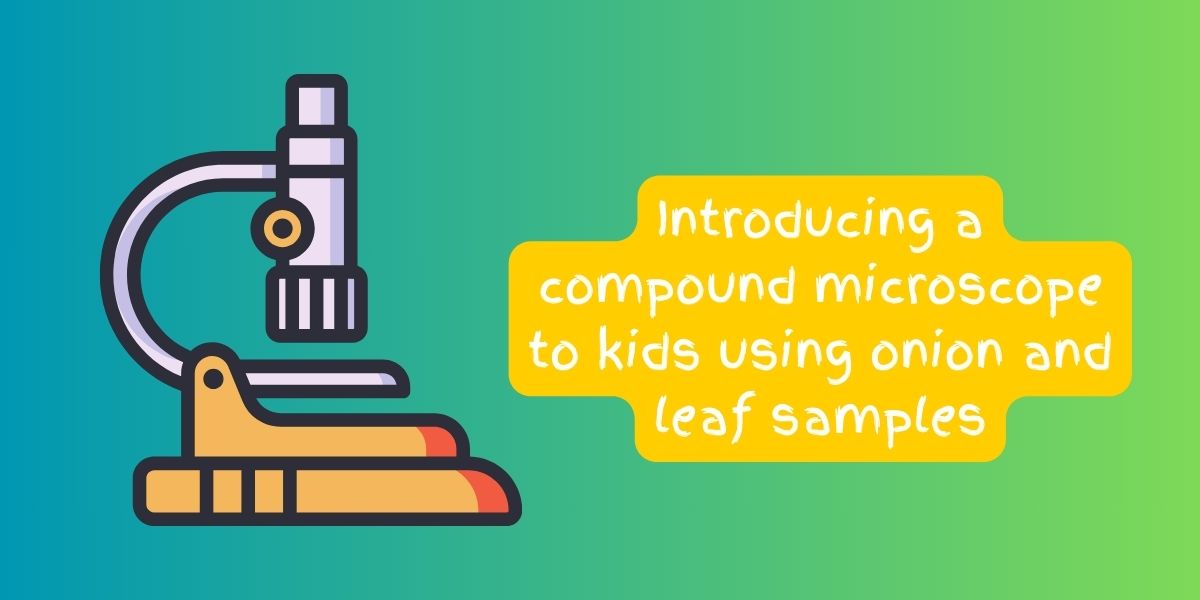Introducing a compound microscope to kids using onion and leaf samples can be an exciting and educational experience. Here’s a step-by-step guide on how to introduce the compound microscope to kids using these samples:
1. Introduction to the Microscope:
- Start by explaining what a compound microscope is and how it magnifies objects that are too small to see with the naked eye.
- Show them the different parts of the microscope, including the eyepiece, objective lenses, stage, and focus knobs. Let them explore the microscope and get familiar with its components.
2. Preparation of Onion and Leaf Samples:
- Take a small piece of onion and a leaf (such as a spinach leaf or a leaf from a plant in your backyard).
- Using a sharp knife or scalpel, carefully cut thin sections of the onion bulb and leaf. Ensure that the sections are thin and transparent to allow light to pass through easily.
3. Mounting the Samples:
- Place the thin sections of onion and leaf on separate microscope slides.
- Add a drop of water to each sample to prevent them from drying out and to improve visibility.
- Gently place a coverslip over each sample to flatten it and hold it in place.
4. Using the Microscope:
- Place one of the prepared slides on the microscope stage and secure it in place using the stage clips.
- Begin with the lowest magnification objective lens (usually 4x or 10x). Ask the kids to look through the eyepiece and observe the sample.
- Encourage them to use the focus knobs to bring the sample into sharp focus.
- Guide them to explore different areas of the sample by moving the slide using the mechanical stage controls.
5. Observations and Discussions:
- Encourage the kids to describe what they see in the onion and leaf samples. Prompt them to look for different structures, shapes, and patterns.
- Discuss the differences between the onion and leaf samples. For example, they can observe the cells in the onion bulb and the leaf’s vascular bundles.
- Ask open-ended questions to stimulate curiosity and critical thinking. For example, “What do you notice about the shapes of the cells?” or “Why do you think leaves are green?”
6. Hands-On Activities:
- After observing the samples, consider engaging the kids in hands-on activities related to plant anatomy or microscopy.
- For example, they could create their own plant cell models using craft materials or draw what they observed under the microscope.
Conclusion:
Introducing kids to the compound microscope using onion and leaf samples can foster their curiosity about the natural world and help them develop important scientific skills such as observation and critical thinking. Encourage them to explore and ask questions as they delve into the microscopic world!


No responses yet